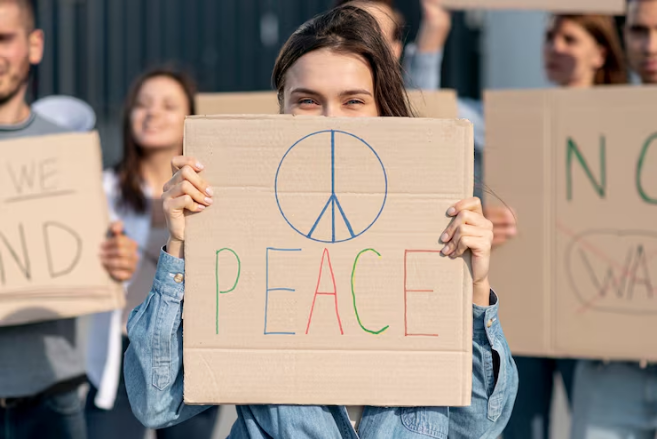“Even in a throng, my peace remains undisturbed, because my peace is mental, not physical.”
In the era of Revolution 4.0, where technology dictates pace and transformation, the word peace has emerged as one of the most frequently invoked yet least understood ideals. While peace is often defined in relational or societal terms whether community harmony, diplomatic accord, or intergroup cooperation there is far less scholarly and social focus on inner peace, the psychological equilibrium that enables resilience and clarity of thought.
Inner peace, unlike outer peace, is not contingent on circumstances. It is cultivated through mental discipline, reflection, and conscious choices. Activities such as mindfulness, journaling, spiritual practice, or even simple acts of kindness can fortify this inner state. Once established, inner peace radiates outward shaping decisions, tempering conflicts, and nurturing relational harmony. As leaders, when we press the “peace button” within ourselves, we not only defuse personal anxiety but also deactivate external discord.

However, perspectives on peace are far from uniform. Different generations interpret, pursue, and prioritize peace through distinctive lenses:
- Baby Boomers (1946–1964): Having grown up amidst post-war reconstruction and ideological conflicts, this generation often views peace as stability a state of social and economic security. For them, peace aligns with predictability and the avoidance of upheaval.
- Generation X (1965–1980): Sceptical yet adaptive, Gen X tends to seek peace in balance between work and life, individuality and responsibility. Their inner peace thrives when autonomy is respected and external chaos is navigated with pragmatic resilience.
- Millennials (1981–1996): Raised in an age of globalization and rapid technological change, Millennials approach peace as purpose-driven alignment. They associate inner peace with authenticity and outer peace with collective impact, often advocating for inclusivity and social justice.
- Generation Z (1997–2012): Digital natives born into hyper-connectivity and constant stimuli, Gen Z perceives peace as mental detoxification. For them, inner peace requires digital boundaries, self-awareness, and creative self-expression. Outer peace, in turn, manifests through activism and advocacy for environmental and social sustainability.
- Generation Alpha (2013 onward): Still in formative years, this generation is likely to conceptualize peace through techno-human harmony. Raised in an AI-integrated society, their understanding of peace may blend emotional intelligence with technological ethics.
Across generations, the common denominator is clear: peace must begin within. Strengthening mental clarity equips individuals not only to withstand the pressures of an accelerated world but also to contribute meaningfully to harmonious societies.
Revolution 4.0 challenges us to innovate, but it also demands that we pause. To truly thrive in this era, peace must be reframed not merely as the absence of conflict, but as the presence of a resilient, conscious, and generationally adaptive mind.
By Priyadarshini Panda ( a research scholar on Workplace Spirituality)
E-Mail: panda.priyadarshini8@gmail.com
Excellent